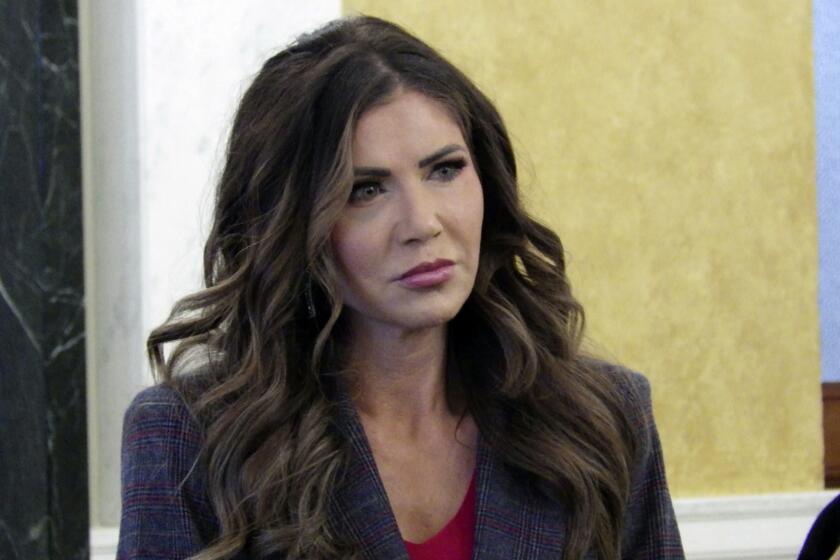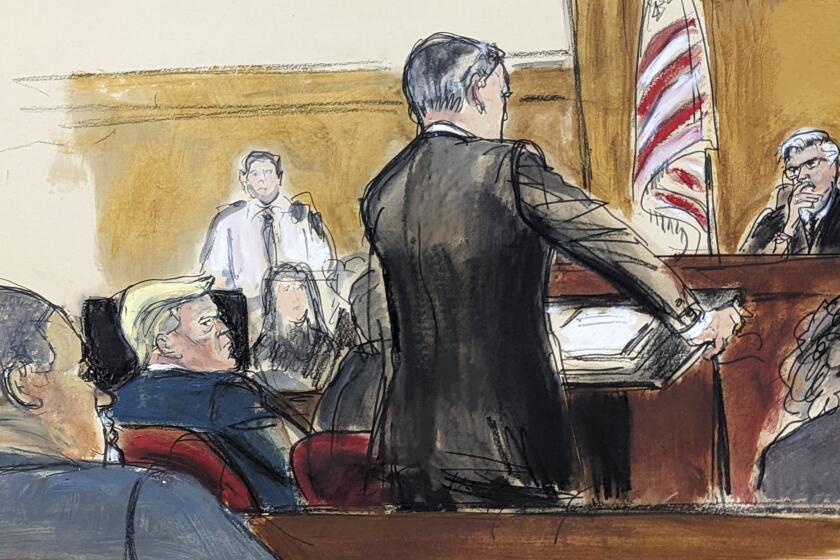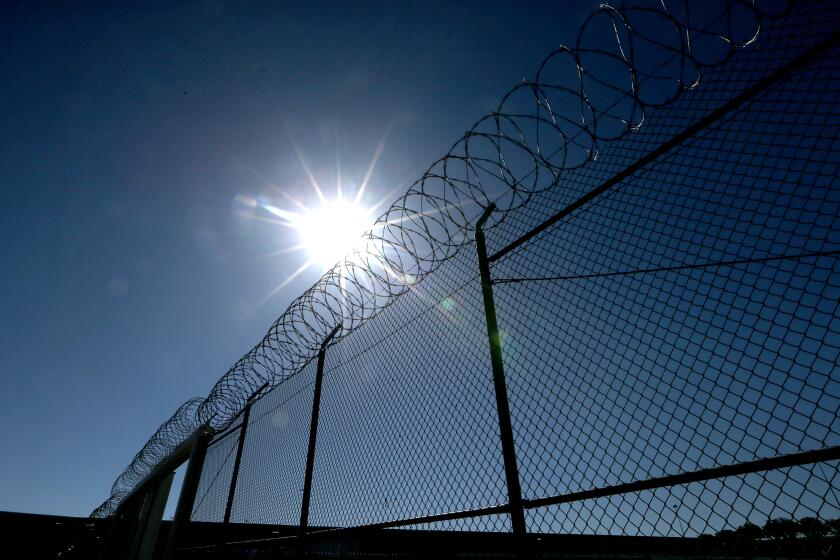Op-Ed: Return to New Orleans - an open hand, a welcome home

Photo illustration by Wes Bausmith, photograph of Lynell George’s grandfather courtesy of Lynell George.
Like most people with people “at home” in New Orleans, I found myself both here and there in 2005. By late August, I was daily monitoring weather maps two time zones away. I watched how a “tropical system” gathered force, how it garnered enough ferocity to be granted a name. Katrina looked serious, even from 2,000 miles away. But my family, as always in moments like this, downshifted emotionally, ran a checklist, stilled potential chaos.
My mother, a New Orleans native, made phone calls from Los Angeles. The list included blood ties and friends she considered extended kin. She was the one entrusted with keeping tabs, the point person. She knew the storm rituals: Baton Rouge. Waiting it out. Or that telltale “eh” — a push of air through the phone’s mouthpiece so full of hubris that you almost felt it: “I ain’t going nowhere.” Even no plan was a plan.
When the hurricane made landfall on Aug. 29, I was staring up into the television screen floating above my newsroom pod. It was over — the anticipation part. This other part — the horror-show part — that was new. I was trying to make sense of what I was looking at, that sheeny murkiness where the street should be, and peeking through, only the very tops of trees.
On the other side of the city, my mother was navigating an arduous first round of chemotherapy. She’d spend the day at the cancer center hooked up and anxious, and then return home to watch her hometown first fill up with water and then transform into a liquid tomb. She couldn’t be coaxed into switching to another channel. She tried to get her bearings by making out familiar intersections and landmarks. She heard the broadcast rumors about her girlhood idol Antoine “Fats” Domino, missing if not dead. (He would be found alive, rescued from his Lower Ninth Ward home.) Her commentary, simple and unchanging: “Poor New Orleans.”
Back then, I was a reporter at the Los Angeles Times. In those first few post-storm hours, I wasn’t tapped to travel. Instead, I was tasked with making phone calls across the city, country, globe — to help collect and create cultural context.
That was fine by me. I hadn’t been back to New Orleans for more than a decade. For a place I had a soul-deep connection to, it had become tricky territory. Though I’m a native of Los Angeles, I visited New Orleans almost every August into my 20s, until my grandfather died of cancer. We — my mother, father and brother — returned briefly for a simple funeral. With my grandfather gone — his voice, his rituals, his sage yet oblique perspective — the very idea of the city seemed forever altered. I thought I’d said goodbye to New Orleans when I said goodbye to him.
At work I “fed” stories about what all that water might mean. When the decaying levees failed, more than 80% of the city was consumed by water. Roughly 1,800 people died and more than 1 million residents from the gulf region were cut off from their homes, set adrift — the most rapid migration ever seen in North America.
While the news led with the details of a drowned city and an inventory of violent loss of life — bloated bodies, substandard infrastructure, ruined neighborhoods — the “emptying-out” portended larger questions. What of the hundreds of thousands who found themselves marooned, towns or states away? What of the stories and histories marooned with them? What hung in the balance was the very idea of New Orleans, its language and music and its way of life.
Cities are made up of structures, landmarks that people can point to. Yet place in New Orleans is brought most to life by its unique, racially diverse culture, by its people, and its ghosts. Without the people, my interview subjects predicted, New Orleans wouldn’t — couldn’t — be the same. I filled notebook pages, underscoring adjectives and urgent verbs that floated above the blue lines. These weren’t just quotes and statistics about breaches of faith and trust; these interviews were prayers.
Evenings, I’d sit with my mother and take in more coverage. We worked the phones, attempting a different kind of reportage, putting pins on a map. One cousin went to Atlanta. Another relative washed up in Texas. Another, miraculously, made it out to California. My mother’s oldest friend, a violinist, Clevetta, had vanished. (We later learned she was still in New Orleans; she had relocated to higher ground.) My cousin Kitty had finally zipped off to Baton Rouge. But three days later, after deliberately not tuning in to the news, she was restless, ready to return to her sweet sunny house in Pontchartrain Park. Her brother had to physically restrain her: “Do you understand? You can’t go home. You may not even have one.”
Sometime in those first two weeks, I started carrying an old black-and-white photograph of my grandfather into the office. It was a formal portrait of the man he was before I knew him. Younger, but not a boy, certainly a man, with a steady, assured gaze. I didn’t tack the photo on my cubicle partition; I didn’t even leave it on the clean plane of my desk. Instead, I slid him inside a notebook. He was just there, close by, as I did my research, took down more information. Assessments. Experts attempting to read into a future that appeared as murky and putrid as that water.
I was happy my grandfather wasn’t able to see what I saw: the floating bodies — so many black bodies — people left for dead at the side of the road, on roofs, arms upraised. Help.
As it would turn out, he could have been one of them. His old house in Gentilly, his prize for years of doubled-up jobs and graveyard shifts, for sticking with it through the most virulent years of Jim Crow, would take in many feet of water, would have to be torn down.
********
In time, my mother’s condition stabilized. Rebounded. Then worsened. “If I pull out of this,” she asked, “would you go back to New Orleans with me?” A reunion of her music school classmates had been planned. I said yes. Of course. My resolve didn’t have a chance to waver; she was gone before that.
And still I kept watch on New Orleans out of the corner of my eye, looking for the slow steps toward rebirth and renewal. I wanted to know who would be welcomed back home, and how.
New Orleans lost a sizable percentage of its black population after Katrina — nearly 100,000 people, recent figures suggest. Now many of the once mostly black neighborhoods lie empty or are gentrifying. The shotgun houses, the cottages, the public projects of my family’s years there, stretching back to early last century, are gone, replaced by condos or construction fences. Not improvement, but erasure.
My cousin Kitty’s homecoming was road-blocked, her walls a forest of black mold, her frontyard a tangle of wire and pipes. It was too expensive, and she, too exhausted to rebuild. The lush canopy of trees I remember floating beneath on approaching my grandfather’s house — all gone.
My friend Mark Broyard, an L.A. artist with roots in New Orleans, went back shortly after the flood to help. He also rescued wreckage — pieces of wood, photographs, baby doll arms, teacups — that he has incorporated into art. Reminders. Just last week he told me how strange it was to go “back home” and not have family to stay with, not to have a pot of something cooking on a stove and that question you always need to say yes to: “Baby, you come on in here and get something to eat, no?”
I know what that means. Now.
********
It would be work — writing a profile — that would call me, but it was music that would pull me. By pure chance — serendipity — I heard a riding groove, just 16 bars, that kicked open a door inside me I thought was locked tight. It was like the music spinning on my mother’s hi-fi when I was growing up, or transmitted through her fingers along the piano keys. It was as familiar as laughter, or a sigh. I wanted to know more. I contacted the musician who said he was sorry but he wouldn’t be swinging west before my deadline: “You’ll have to come to New Orleans.”
The trip itself — not much more than 48 hours after a 20-year absence — was a hedge. It was long enough to get the story and attend to some overdue family business but not so long that I could suffer too much sadness. Yet as soon as I heard the airport jitney driver’s cadenced “Welcome to New Orleans,” a deep yearning welled up. Suspended on the highway, floating over the graveyards, then through the old Treme neighborhood, down Esplanade, I felt my compass reset. An open hand, welcome home.
I have returned to New Orleans every year since then. Each time, I encounter a city that is both emptier and fuller than I imagine it will be. As Mark said, it is still very strange — devastating — not to have a pot of something warming on a stove, waiting for me. I miss those people, but I’ve slid them inside myself as I navigate this changing place.
I’ve reconnected with old friends and made new ones who have welcomed me, who see me not as apart but stitched into the fiber. They saw it before I did. People who have weathered so much are easing me back into an identity that has more resonance than I could have ever imagined. I didn’t have to rebuild a structure; my task has been to rebuild a relationship. I thought I was done with New Orleans, but I realized it wasn’t finished with me.
We like to think of New Orleans as a hearth, a seat of celebration, music, food, excess — the country’s id, its soul. But now I think this city and its plight should serve as our collective conscience.
The flood and the ongoing struggle of New Orleans to reclaim itself continues to reveal our country’s unfinished business — around race and class and hierarchies — as well our moral obligation to try to make it right.
So much will not be replaced. That said, I also know that change is a constant, inevitable. “Progress,” though, should be something more nuanced than erasure.
As one New Orleans friend said to me recently, “Now that we’ve survived, it’s about trying to find a better way to live together.” New Orleans’ rebirth should consider the many layers of its story: Your new domain was once someone else’s dream.
********
Last visit, I stood with my friend Linda trying to catalog my mother’s life. We rolled past her old haunts. I lingered for a long while in front of Fats Domino’s office/home, imagining the water. I was busy photographing what still stood, crucial pieces of her story. I was as worried about how much would vanish between this trip and the next as I was that the soft spring light would drain from the sky. No time to waste.
We were wandering on contested ground, another past ceding abruptly to the future. In this gentrifying neighborhood, change was not just quick but brutal. Linda was detailing this, just as my eye fell on a patch of graffiti laced along the bottom quarter of a stooped Creole cottage. A survivor.
I’d wanted to capture the words in a photograph — the lettering, small, cramped like a whisper — but the light was too faint for it to register.
Instead it is an image that surfaces in my mind, enigmatic yet specific, its message both maxim and murmuring conscience: “Our coffins will be the same size.”
Lynell George is the author of “No Crystal Stair: African-Americans in the City of Angels.”
Follow the Opinion section on Twitter @latimesopinion and Facebook
More to Read
A cure for the common opinion
Get thought-provoking perspectives with our weekly newsletter.
You may occasionally receive promotional content from the Los Angeles Times.






